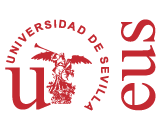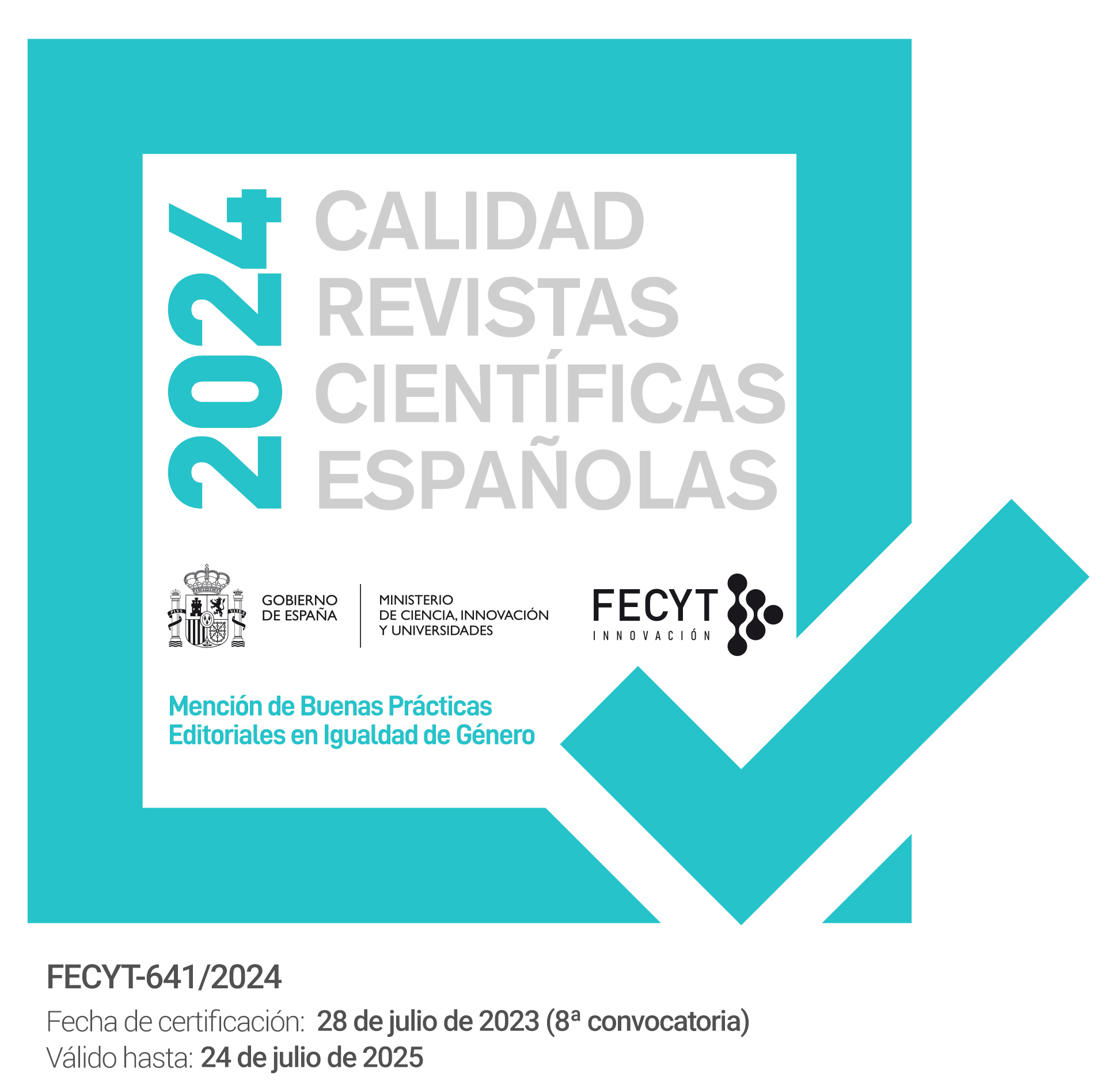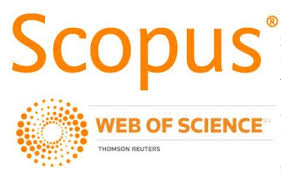Paisaje lingüístico y crematonimia: la estratificación social de los nombres comerciales
DOI:
https://doi.org/10.12795/PH.2024.v38.i01.02Palabras clave:
Paisaje Lingüístico, socionomástica, crematónimos, estratificación lingüísticaResumen
El objetivo de este trabajo es estudiar la presencia y el papel que desempeñan los crematónimos o nombres comerciales dentro del paisaje lingüístico de Salamanca. A partir de una muestra estratificada en tres zonas que representan tres niveles socioeconómicos, vemos las diferencias funcionales y formales de estos elementos en cada uno de ellos, así como las tendencias que se solapan en todo el entorno. Además de poder comprobar la cada vez más intensa incorporación de otras lenguas en el PL, con especial incidencia del inglés, se percibe una brecha en el comportamiento del estrato inferior frente a los niveles alto y medio, que ofrecen más puntos de contacto en las prácticas atributivas comerciales, resultados que creemos extrapolables a otras sintopías.
Descargas
Referencias bibliográficas
Ainiala, T. y Vuolteenaho, J. (2006). How to study urban onomastic landscape? Acta onomastica, 47, 58-63.
Akzhigitova, A. y Zharkynbekova, S. (2014). Language planning in Kazakhstan. The case of ergonyms as another scene of linguistic landscape of Astana. Language Problems and Language Planning, 38(1), 42-57. https://doi.org/10.1075/lplp.38.1.03akz
Bagna, C. y Machetti, S. (2012). LL and (Italian) menus and brand names: A survey around the world. En C. Hélot, M. Barni, R. Janssens y C. Bagna (Eds.), Linguistic Landscapes, Multilingualism and Social Change (pp. 217-230). Peter Lang.
Bajo Pérez, E. (2002). La caracterización morfosintáctica del nombre propio. Editorial Toxosoutos.
Ben-Rafael, E. (2009). A sociological approach to the study of linguistic landscapes. En E. Shohamy y D. Gorter (Eds.), Linguistic Landscape: Expanding the scenery (pp. 40-55). Routledge.
Blommaert, J. (2012). Chronicles of Complexity. Ethnography, Superdiversity and Linguistic Landscapes. Tilburg University. https://doi.org/10.21832/9781783090419
Blommaert, J. (2014). Infrastructures of superdiversity: Conviviality and language in an Antwerp neighborhood. European Journal of Cultural Studies, 17(4), 431-451. https://doi.org/10.1177/1367549413510421
Blommaert, J. y Dong, J. (2010). Language and Movement in Space. En N. Coupland (Ed.), The handbook of language and globalization (pp. 366-385). Wiley-Blackwell. https://doi.org/10.1002/9781444324068.ch16
Blommaert, J. y Maly, I. (2014). Ethnographic linguistic landscape analysis and social change: A case study (Tilburg Papers in Culture Studies 100). Tilburg University.
Boerrigter, R. y Nijboer, H. (Eds.). (2012). Names as Language and Capital. Proceedings Names in the Economy III. Amsterdam, 11-13 June 2009. http://www.meertens.knaw.nl/nite/
Caravedo, R. (2007). El espacio en la lingüística de la variación. Archivo de Filología Aragonesa, 59-60(2), 1119-1129.
Cenoz, J. y Gorter, D. (2006). The Linguistic Landscape and Minority Languages. International Journal of Multilingualism, 3(1), 67-80. https://doi.org/10.1080/14790710608668386
Organización mundial de la propiedad intelectual. (2012). Clasificación Internacional de Productos y Servicios para el registro de las marcas (Clasificación de Niza).
Chiang, S.-Y. (2009). Interformative meaning of signs: Brand naming and globalization in China. Social Semiotics, 19(3), 329-344. https://doi.org/10.1080/10350330903072680
Crystal, D. (1997). English as a Global Language. Cambridge University Press.
Danesi, M. (2011). What’s in a Brand Name? A Note on the Onomastics of Brand Naming. Names. A Journal of Onomastics, 59(3), 175-185. https://doi.org/10.1179/002777311X13082331190119
Edelman, L. (2009). What’s in a name? Classification of Proper names by language. En E. Shohamy y D. Gorter (Eds.), Linguistic Landscape: Expanding the scenery (pp. 141-154). Routledge.
Edelman, L. y Gorter, D. (2010). Linguistic Landscapes and the Market. En H. Kelly-Holmes y G. Mautner (Eds.), Language and the Market (pp. 96-108). Palgrave Macmillan. https://doi.org/10.1007/978-0-230-29692-3_9
Egorova, E. y Tihonova, K. A. (2017). The function of urbanonyms in language and cultural space of the city (in terms of the analysis of urbanonyms of Arkhangelsk). Arctic and North, 26, 12-20. https://doi.org/10.17238/issn2221-2698.2017.26.14
El-Yasin, M. K. y Mahadin, R. S. (1996). On the pragmatics of shop signs in Jordan. Journal of Pragmatics, 26(3), 407-416. https://doi.org/10.1016/0378-2166(95)00017-8
Fernández Juncal, C. (2020a). La estratificación social del paisaje lingüístico de Bilbao. Revista Internacional de Lingüística Iberoamericana, (35), 117-141. https://doi.org/10.31819/rili-2020-183509
Fernández Juncal, C. (2020b). Entre crematónimos y topónimos. Los nombres de comercios. Boletín de Filología (Santiago), 55(2), 345-367. https://doi.org/10.4067/S0718-93032020000200345
Friedrich, P. (2002). English in advertising and brand naming: Sociolinguistic considerations and the case of Brazil. English Today, 18(3), 21-28. https://doi.org/10.1017/S0266078402003048
García Marcos, F. (2019). El lenguaje de las rotulaciones de establecimientos comerciales en las ciudades contemporáneas. Los casos de Almería, Łódź y Tarrasa. Signa: Revista de la Asociación Española de Semiótica, (28), 699-732. https://doi.org/10.5944/signa.vol28.2019.25075
González del Río, J., Ampuero Canellas, O., Jordá Albiñana, B. y Magal Royo, T. (2011). El nombre de marca: Interrelación de factores lingüísticos y corporativos. Revista de Lingüística y Lenguas Aplicadas, 6, 181-193. https://doi.org/10.4995/rlyla.2011.902
Gorter, D. (Ed.). (2006). Linguistic Landscape: A New Approach to Multilingualism. Multilingual Matters. https://doi.org/10.21832/9781853599170
Grandinetti, R. (2008). Il rapporto tra produzione e consumo in una prospettiva storica. En R. Grandinetti (Ed.), Marketing. Mercati, prodotti e relazioni (pp. 23-42). Carocci Editore.
Haarmann, H. (1986). Verbal strategies in Japanese fashion magazines. A study in impersonal bilingualism and ethnosymbolism. International Journal of the Sociology of Language, (58), 107-121. https://doi.org/10.1515/ijsl.1986.58.107
Hakala, U., Paula, S. y Kantola, S.-P. (2015). Toponyms as carriers of heritage: Implications for place branding. Journal of Product & Brand, 24(3), 263-275.
Instituto Nacional de Estadística. (s. f.). Atlas de distribución de renta de los hogares. https://www.ine.es/experimental/experimental.htm
Instituto Nacional de Estadística. (2020). Demografía y población. https://www.ine.es/dyngs/INEbase/es/categoria.htm?c=Estadistica_P&cid=1254734710984
Junta de Castilla y León. (2023). Datos del turismo en Castilla y León. https://analisis.datosabiertos.jcyl.es/pages/turismo/?flg=es
Labov, W. (1966). The Social Stratification of English in New York City. Center for Applied Linguistics.
Lanza, E. y Woldemariam, H. (2014). Indexing modernity: English and branding in the linguistic landscape of Addis Ababa. The International Journal of Bilingualism, 18(5), 491-506. https://doi.org/10.1177/1367006913484204
Leibring, K. (2012). From Backmans Blommor to Hairstyle by Lena: The Use of Personal Names in the Names of Small Companies in Sweden. En R. Boerrigter y H. Nijboer (Eds.), Names as Language and Capital. Proceedings Names in the Economy III. Amsterdam, 11-13 June 2009 (pp. 48-57). http://www.meertens.knaw.nl/nite/
Líbano Zumalacárregui, M. A. (1993). Toponimia menor: onomástica comercial. Fontes Linguae Vasconum: Studia et documenta, 25(62), 125-136. https://dialnet.unirioja.es/descarga/articulo/26122.pdf
Moutinho, L. y Coimbra, R. (1998). O nome é a alma do negócio: Um estudo Lingüístico dos nomes das Lojas em Portugal. En Actas do XIII Encontro da Associação Portuguesa de lingüística (Vol. 2, pp. 93-104). Colibri.
Papen, U. (2012). Commercial discourses, gentrification and citizens’ protest: The linguistic landscape of Prenzlauer Berg, Berlin. Journal of Sociolinguistics, 16(1), 56-80. https://doi.org/10.1111/j.1467-9841.2011.00518.x
Pennycook, A. (2003). Global Englishes, Rip Slyme, and performativity. Journal of Sociolinguistics, 7(4), 513-533. https://doi.org/10.1111/j.1467-9841.2003.00240.x
Piller, I. (2003). Advertising as a Site of Language Contact. Annual Review of Applied Linguistics, 23, 170-183. https://doi.org/10.1017/S0267190503000254
Pinillos Laffón, A., Olivares Delgado, F. y Rodríguez Valero, D. (2016). El nombre de la marca corporativa. Una taxonomía de los nombres de empresa familiar en España. Revista Latina de Comunicación Social, (71), 750-774. https://doi.org/10.4185/RLCS-2016-1119
Real Academia Española y Asociación de Academias de la Lengua Española. (2009). Nueva gramática de la lengua española. Espasa.
Real Academia Española y Asociación de Academias de la Lengua Española. (2010). Ortografía de la lengua española. Espasa.
Relph, E. (1976). Place and Placelessness. Pion.
Seide, M. S. y Lucas, P. (2018). Os topônimos comerciais da cidade de Naranjal, Paraguai. Confluência, (54), 164-195. https://doi.org/10.18364/rc.v1i54.238
Shohamy, E. y Gorter, D. (Eds.). (2009). Linguistic landscape. Expanding the scenery. Routledge. https://doi.org/10.4324/9780203930960
Sjöblom, P. (2013). Lumia by Nokia, iPhone by Apple: Global or Local Features in Commercial Names? En P. Sjöblom, T. Ainiala y U. Hakala (Eds.), Names in the Economy: Cultural Prospects (pp. 2-14). Cambridge Scholars.
Soler-Carbonell, J. (2016). Complexity Perspectives on Linguistic Landscapes: A Scalar Analysis. Linguistic Landscape, 2(1), 1-25. https://doi.org/10.1075/ll.2.1.01sol
Teutsch, A. (2012). Speakability of Trademarks. En R. Boerrigter y H. Nijboer (Eds.), Names as Language and Capital. Proceedings Names in the Economy III. Amsterdam, 11-13 June 2009 (pp. 82-92). http://www.meertens.knaw.nl/nite/
Tufi, S. y Blackwood, R. (2010). Trademarks in the linguistic landscape: Methodological and theoretical challenges in qualifying brand names in the public space. International Journal of Multilingualism, 7(3), 197-210. https://doi.org/10.1080/14790710903568417
Vandenbroucke, M. (2014). Language visibility, functionality and meaning across various TimeSpace scales in Brussels’ multilingual landscapes. Journal of Multilingual and Multicultural Development, 36(2), 163-181. https://doi.org/10.1080/01434632.2014.909442
Vandenbroucke, M. (2016). Socio-economic stratification of English in globalized landscapes: A market-oriented perspective. Journal of Sociolinguistics, 20(1), 86-108. https://doi.org/10.1111/josl.12166
Walkowiak, J. B. (2013). Foreign branding in Poland: Chrematonyms and anthroponyms. En O. Felecan (Ed.), Proceedings of ICONN 2 (pp. 218-227). Mega y Argonaut.
Wolfram, W. (1969). A Sociolinguistic Description of Detroit Negro Speech. Center for Applied Linguistics.
Publicado
Cómo citar
Número
Sección
Licencia
Derechos de autor 2024 Carmen Fernández Juncal

Esta obra está bajo una licencia internacional Creative Commons Atribución-SinDerivadas 4.0.
Las ediciones impresa y electrónica de esta Revista son editadas por la Editorial Universidad de Sevilla, siendo necesario citar la procedencia en cualquier reproducción parcial o total.
Salvo indicación contraria, todos los contenidos de la edición electrónica se distribuyen bajo una licencia de uso y distribución “Creative Commons Atribución-NoComercial-SinDerivar 4.0 Internacional” ![]() . Puede consultar desde aquí la versión informativa y el texto legal de la licencia. Esta circunstancia ha de hacerse constar expresamente de esta forma cuando sea necesario.
. Puede consultar desde aquí la versión informativa y el texto legal de la licencia. Esta circunstancia ha de hacerse constar expresamente de esta forma cuando sea necesario.
Los autores/as que publiquen en esta revista aceptan las siguientes condiciones:
- Los autores/as conservan los derechos de autor y ceden a la revista el derecho de la primera publicación, y consienten en que se distribuya con una licencia Creative Commons By NC ND 4.0, que permite a terceros utilizar lo publicado siempre que mencionen la autoría del trabajo y a la primera publicación en esta revista, no se haga uso comercial y se reutilice de igual forma."
- Los autores/as pueden realizar otros acuerdos contractuales independientes y adicionales para la distribución no exclusiva de la versión del artículo publicado en esta revista (p. ej., incluirlo en un repositorio institucional o publicarlo en un libro) siempre que indiquen claramente que el trabajo se publicó por primera vez en esta revista.
- Se permite y recomienda a los autores/as que una vez publicado el artículo en la revista Philologia Hispalensis (versión online) se descarguen el PDF correspondiente y lo difundan por internet (ResearchGate, Academia.edu, etc.) ya que puede conducir a intercambios científicos productivos y a una mayor y más rápida difusión del trabajo publicado (vea The Effect of Open Access).
Aceptado 2023-05-15
Publicado 2024-06-05
- Resumen 313
- PDF 167
- HTML 78
- XML 20









